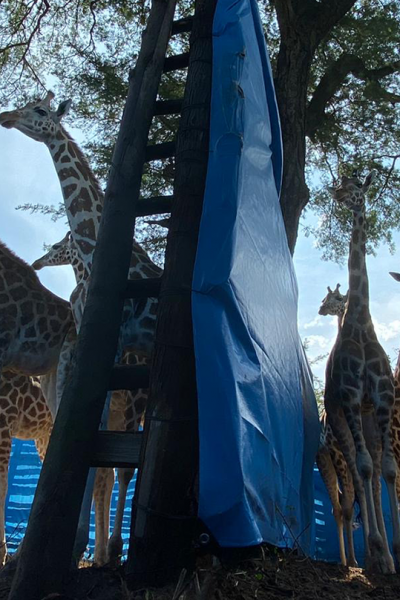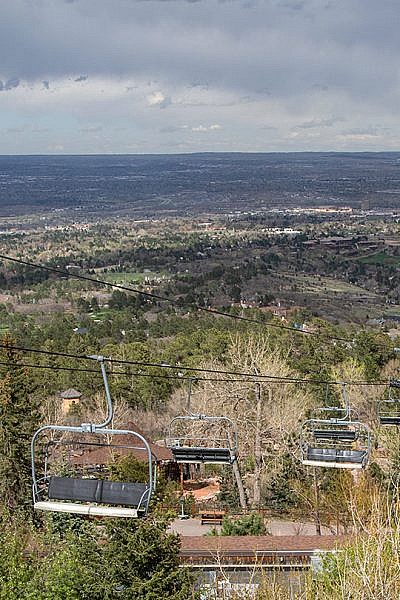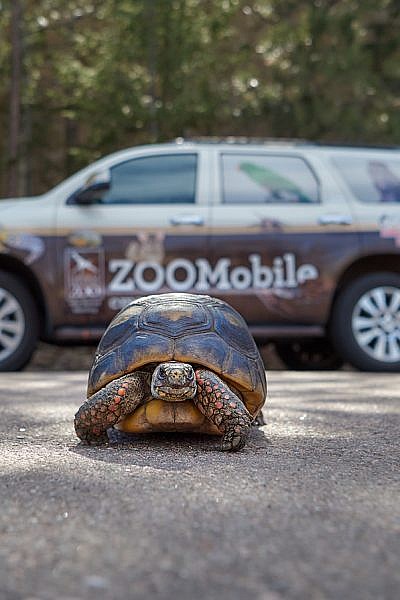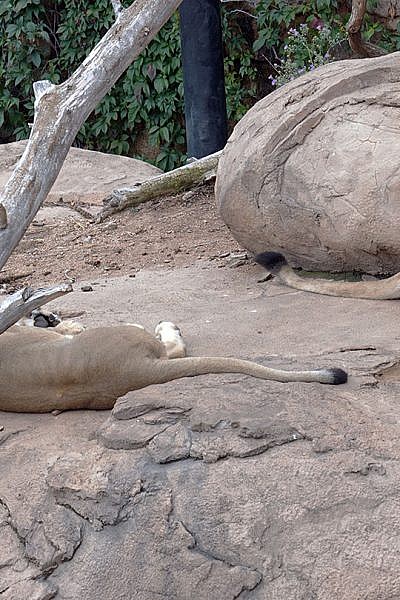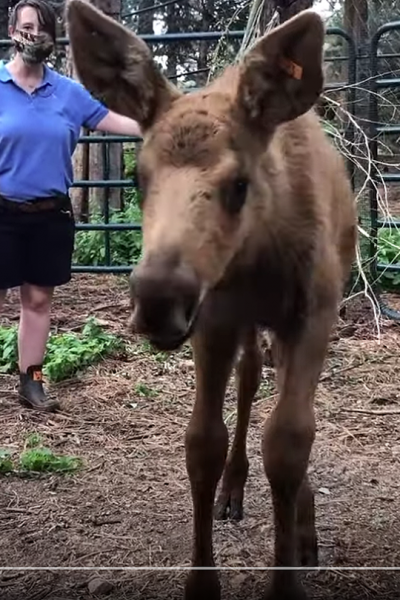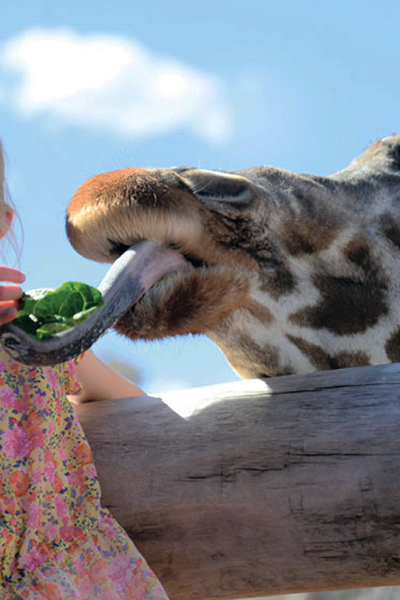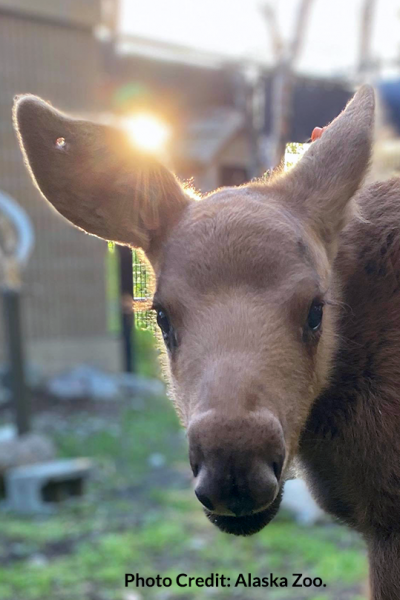Timed Entry Required; Additional Tickets Released Wednesday – Our breathtaking mountainside 4-mile route through the Zoo to Shrine of the Sun and back has become an annual Cheyenne Mountain Zoo tradition, and it is the only day of the year that guests are allowed to travel up to the Shrine of the Sun by foot! Run to the Shrine is an important fundraiser for the Zoo – and even more important this year, after we lost approximately three months’ worth of busy spring gate revenue.
To preserve this event while making it as safe as possible during the pandemic, this year’s Run to the Shrine will be an evening event, from 3:20 p.m. to 8 p.m. on Sunday, August 30, 2020. Please read below for important changes (that require registrants’ action) to Run to the Shrine 2020.
Ticketing and Check-In Information:
- Run to the Shrine registrants must reserve their entrance time online in advance. Please check your email for the link to select your entrance time. A limited number of run/walk e-tickets is available to enter during each time period, in order to ensure proper distancing and comply with state and county guidelines. If your first choice is full, please choose another ticket time.
- Check-in is at the front gate from 3:20 to 5 p.m. Advance registration tickets are required for all run/walk participants and guests, including children 2 & under.
- Please be in line to enter the Zoo within 20 minutes after your ticketed time. Early arrivals or arrivals later than 20 minutes past your ticketed entry time may not be accommodated. If you arrive early for your time slot, please wait in your car until your entry time begins. Arriving during your designated arrival time will help us manage traffic flow into our parking lot and through the admission gates.
- Capacity for Run to the Shrine has been limited to current registrants only, for the safety of runners, walkers and their families. Additional spots from cancellations will be released on Wednesday, August 19 at 10 a.m. at cmzoo.org/run.
- Family and spectator tickets must be purchased in advance. Tickets can be reserved via the links provided in the email we sent to registered runners. Family and spectator tickets do not include access to Shrine Road or any of the benefits of Run to the Shrine registration. These tickets are for CMZoo access during the event only.
- Once you enter the Zoo, you are welcome to stay until the event ends at 8 p.m. Shrine Road access will end at 7:30 p.m.
Changes to the Event:
- Run to the Shrine 2020 will not be a timed run/walk. Runners and walkers will have access to start the ascent up Shrine Road from the time they arrive until 6:30 p.m. Participants have the option to enjoy Shrine Road and visit the rest of the Zoo (including animals!) at your own pace. Visit Shrine Road, animal exhibits and food outlets at your leisure. Shrine Road will close to pedestrians at 7:30 p.m., so be sure to finish your round trip to the Shrine gate before then.
- This year’s Run to the Shrine will only include access to Shrine Road up to the Shrine’s parking lot gate. Due to logistics, the Shrine grounds and buildings will be closed during the event.
- Your commemorative performance T-shirt, featuring this year’s wolf mascot, and commemorative runner bib will be available for pick up in Lodge at Moose Lake. Donation gifts will also be available in Lodge at Moose Lake, for those who have raised $100 or more.
- Bring your own hydration. Water stations will be limited, for the safety of runners and walkers.
- Post-race activities, the awards ceremony and vendor expo are cancelled.
Other Important Information:
– Zoo guests are required to wear masks inside all Zoo buildings, due to the mandate by the state of Colorado. We also strongly encourage wearing a mask when within 6 feet of other groups in outdoor areas. Our staff is wearing masks, and so should you.
– Jogging strollers are welcome as long as they have the proper safety equipment (tethers and hand brakes required).
– Food and beverages will be available for purchase at the Grizzly Grill.
– If you or anyone in your party is experiencing symptoms consistent with COVID-19, please stay home and visit us again when you’re better.
Thank you for joining us for Run to the Shrine, supported by our wonderful partners, Children’s Hospital Colorado and Black Bear Diner.
About Cheyenne Mountain Zoo
Cheyenne Mountain Zoological Society was founded in 1926. Today, Cheyenne Mountain Zoo, America’s mountain Zoo, offers comprehensive education programs, exciting conservation efforts and truly fantastic animal experiences. In 2020, Cheyenne Mountain Zoo was voted #4 Best Zoo in North America and CMZoo’s Rocky Mountain Wild was named #2 Best Zoo Exhibit in North America by USA TODAY 10Best Readers’ Choice Awards. It is Cheyenne Mountain Zoo’s goal to help guests fall in love with animals and nature, and take action to protect them. Of the 233 zoos and aquariums accredited by the Association of Zoos and Aquariums (AZA), Cheyenne Mountain Zoo is one of just a few operating without tax support. Cheyenne Mountain Zoo depends on admissions, membership dues, special event attendance and donations for funding.
